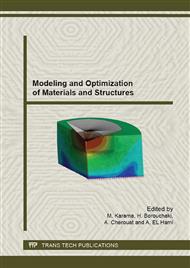[1]
S. Zhang and P. Huang, High-resolution, realtime 3d shape acquisition. IEEE Computer Vision and Pattern Recognition Workshop (CVPRW'04), p.28–28 (2004).
DOI: 10.1109/cvpr.2004.360
Google Scholar
[2]
Jinwei Gu, Shree Nayar, Eitan Grinspun, Peter Belhumeur, and Ravi Ramamoorthi, Compressive structured light for recovering inhomogeneous participating media. Computer Vision–ECCV 2008, p.845–858 (2008).
DOI: 10.1007/978-3-540-88693-8_62
Google Scholar
[3]
Li Zhang, Brian Curless, and Steven M Seitz, Rapid shape acquisition using color structured light and multipass dynamic programming, First IEEE International Symposium on 3D Data Processing Visualization and Transmission, p.24–36, (2002).
DOI: 10.1109/tdpvt.2002.1024035
Google Scholar
[4]
Song Zhang and Peisen Huang, High-resolution, Realtime 3d shape acquisition. IEEE Conference on Computer Vision and Pattern Recognition Workshop 2004 (CVPRW'04), p.28–28, (2004).
DOI: 10.1109/cvpr.2004.360
Google Scholar
[5]
Kevin G Harding, Phase-grating use for slope discrimination in moir´e contouring. Robotics-DL tentative, International Society for Optics and Photonics, p.265–270 (1992).
Google Scholar
[6]
R. Raskar, G. Welch, M. Cutts, A. Lake, L. Stesin, and H. Fuch,. The office of the future: a unified approach to image-based modeling and spatially immersive displays, 25th annual conference on Computer graphics and interactive techniques, p.179–188 (1998).
DOI: 10.1145/280814.280861
Google Scholar
[7]
S. Rusinkiewicz, O. Hall-Holt, and M. Levoy, Real-time 3d model acquisition, ACM Transactions on Graphics (TOG), volume 21, p.438–446 (2002).
DOI: 10.1145/566654.566600
Google Scholar
[8]
Olaf Hall-Holt and Szymon Rusinkiewicz, Stripe boundary codes for real-time structured-light range scanning of moving objects, Eighth IEEE International Conference on Computer Vision 2001 (ICCV 2001), 2, p.359–366, (2001).
DOI: 10.1109/iccv.2001.937648
Google Scholar
[9]
J. Salvi, J. Pages, and J. Batlle, Pattern codification strategies in structured light systems, Pattern Recognition, 37(4): 827–849 (2004).
DOI: 10.1016/j.patcog.2003.10.002
Google Scholar
[10]
Slysz R., Moreau L. and Borouchaki H., On Uniqueness In Triangulation Based Pattern For Structured Light Reconstruction, International Conference on 3D imaging (3D Stereo Media 2013 IC3D), ISBN: 9781479932047, Belgique, (2013).
DOI: 10.1109/ic3d.2013.6732093
Google Scholar


